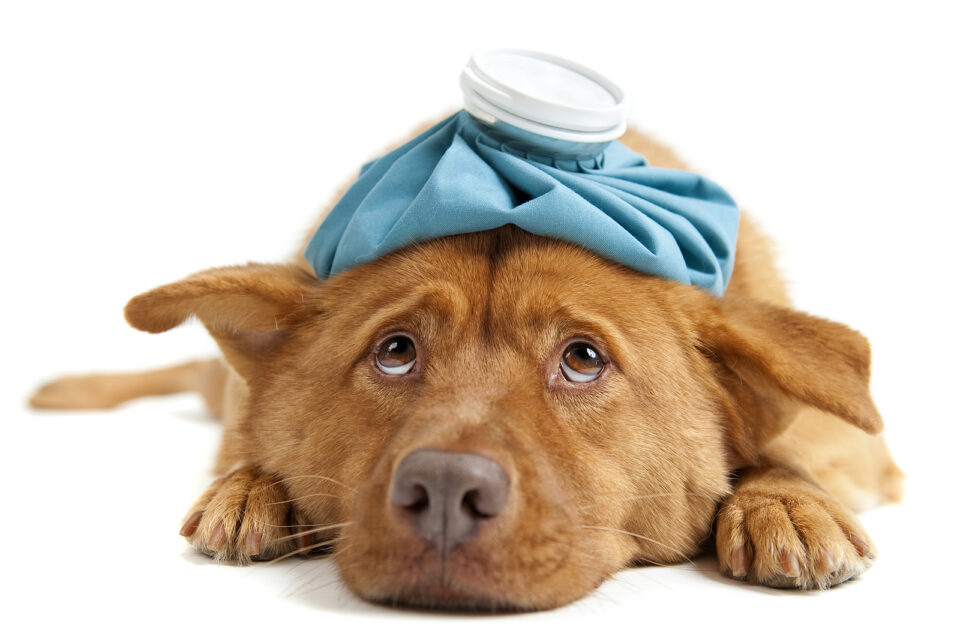For many of us, our pets are more than just companions—they’re family. In an emergency, being prepared and knowing some basic first aid can help you to help these beloved family members.
Keep Yourself Safe
Remember that even gentle pets can lash out when hurt or afraid. Protect yourself first so that you can best help them:
- Don’t try to hug an injured animal.
- Use a muzzle if they seem like they might bite.
- Keep your face (and hands, if possible) away from their mouth.
- Get someone to help you.
Poisoning
In general, if a substance is harmful to people, it’s also going to be harmful to pets: rodent poison, antifreeze, cleaning products, etc. But, keep in mind that there are a number of substances that humans consume that can be harmful to pets:
Alcohol/THC/CBD, avocado, chives, chocolate, coconut water, coffee or coffee grounds, fatty foods, fruit pits, garlic, grapes/raisins, macadamia nuts, medicine (over-the-counter prescription), onions, salt/salty snacks, tea, yeast dough, and any products containing xylitol (an artificial sweetener).
If you know that your pet has been in contact with something harmful, or if they’re exhibiting symptoms of poisoning (having seizures, losing consciousness, or difficulty breathing), call your vet or an animal poisoning hotline immediately: Animal Poison Control Center hotline (888-426-4435), or Pet Poison Helpline (855-764-7661). These numbers are for both the U.S. and Canada. There may be a fee for hotline/helpline calls.
If possible, provide the helpline with the following information:
- Animal species, breed, age, sex, weight, and number of animals involved.
- Symptoms they’re exhibiting.
- Name/description of the toxic substance; how much the animal was exposed to, and how long it’s been since they were exposed to it.
- Product container/packaging.
Gather up any material your pet may have vomited or chewed, and place it in a sealable bag. Take it with you if you go see the vet.
Open Wounds
- Keep your pet calm and still.
- Using a clean cloth, apply firm pressure directly on the wound. Don’t check for bleeding until you’ve applied pressure for at least three minutes.
- If the bleeding is severe, immediately take your pet to the nearest vet.
- If blood is soaking through the cloth, don’t remove it. You might disturb blood clots that have formed. Just add another towel on top and keep applying pressure.
Broken Bones
- As gently as possible, lay your pet on a flat surface.
- If you can do so safely and well, try to bandage or splint the fracture. If you feel uncertain about your ability, leave it off. Poorly done splinting or bandaging can do more harm than good.
- While taking your pet to a veterinarian, keep them in a small space, such as a pet carrier or box with ventilation. If transporting a large dog, improvise a stretcher by using a board, sled, blanket, etc.
Choking
Signs of choking include: difficulty breathing, pawing at their mouth, making choking sounds, or having blue-tinted lips or tongue.
- Without risking your own safety, look inside your pet’s mouth.
- If you see a foreign object, try to remove it, but take care that you don’t push it further down their throat.
- If you can, use your fingers to pull it out, or use a spoon to move it closer to the front of the mouth and then grab it.
- If this doesn’t work, let gravity or the Heimlich maneuver help you.
- For cats or small dogs, pick them up by their thighs, head down, and swing them side to side. If needed you can apply forward pressure just behind the rib cage, on their abdomen.
- If your larger dog is standing, wrap your arms around them, just like you would for a person. Make a fist with one hand, grasp it with the other, then push up and toward their head. If they’re lying down, put one hand on their back, one hand on their abdomen, and press in and up towards the head.
Not Breathing
- Gently pull their tongue forward.
- Check for foreign objects obstructing the airway and remove if found.
- Hold the mouth closed, cover their nose with your mouth, and breathe out until you see their chest expand. Provide 10 breaths per minute until they can breathe on their own or you get to the vet.
For more information about first aid for pets, visit the American Veterinary Medical Association at: bit.ly/avma-pet-owners. They have emergency protocols for other conditions and tips on creating a first aid kit for pets.




